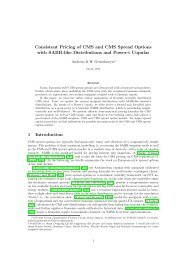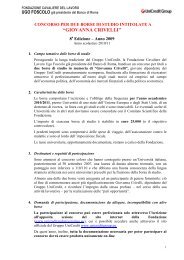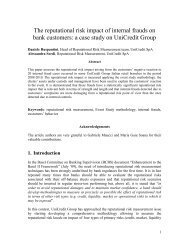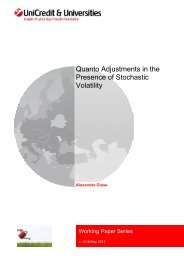Dóra Fazekas Carbon Market Implications for new EU - UniCredit ...
Dóra Fazekas Carbon Market Implications for new EU - UniCredit ...
Dóra Fazekas Carbon Market Implications for new EU - UniCredit ...
Create successful ePaper yourself
Turn your PDF publications into a flip-book with our unique Google optimized e-Paper software.
In an <strong>EU</strong>-context, Hungary held its own in this rapidly developed carbon dioxide market. Ellerman<br />
and Trotignon (2008), in their presentation, defined five groups within the <strong>EU</strong> emissions allowance<br />
market as far as international transactions were concerned (see figure 40). They examined the<br />
number of Member States a country enters into transactions with, and then used the numbers<br />
obtained to place each country in the 25 by 25 matrix reproduced below 41 . Theoretically, the<br />
maximum number should be 24, but Malta did not engage in trading with any Member States.<br />
Countries that did not engage in trading are positioned close to zero. Malta neither sold nor<br />
purchased emissions allowances. Cyprus and Luxemburg, although they sold emissions allowances<br />
to eight and nine countries, respectively, had no companies purchasing allowances from other<br />
states. Greece is also in a group of its own: Ellerman and Trotignon called it “undecided,” although<br />
the term “neutral” may also fit, since they purchased allowances from roughly half of all Member<br />
States and sold allowances to approximately the same number. Two smaller groups are positioned<br />
in the corners of the matrix, these are the small exporters and the small importers. Slovenia and<br />
Ireland purchased allowances from many other countries, but sold to few. Lithuania and Estonia<br />
sold to many, but purchased from few. The fifth, and biggest, group includes Hungary and may be<br />
called the group of “active traders,” who entered into transactions with many other Member States.<br />
This cluster, which includes seventeen countries, traded with at least ten or fifteen countries,<br />
involving both selling and purchasing. Most of the countries in this group belong to the <strong>EU</strong>15, but<br />
five eastern Member States – Poland, the Czech Republic, Latvia, Slovakia and Hungary – are also<br />
found here.<br />
41 Romania and Bulgaria are not listed in the matrix, as their transaction registries did not go online prior to<br />
the end of the pilot phase.<br />
159









